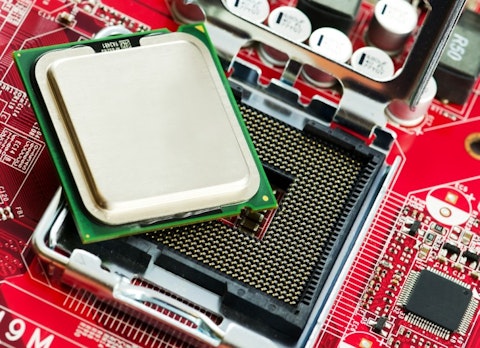The most powerful CPUs on the market in 2015 are not for everyone. You most probably will never need that much processing power for yourself in your life, unless you work in a field which requires it. For the people who do, our list of the most powerful GPUs on the market in 2015 might be another piece of interesting information. The central processing unit chips you whose glory you are about to admire are, quite predictably, all Intel products and members of the widely used Xeon family. They are ranked by their score on the PassMark website, gathered through private testing or user submissions from all around the world.

RMIKKA/Shutterstock.com
It’s exciting to see how far processing has come and how affordable it has become in comparison with what was available just a decade ago. However, what we see on the market today began long ago. Many consider the modern concept of a central processing unit to have first emerged with the invention of the transistor. There were means of processing digital information before that but they worked and looked quite differently. The transistor CPUs allowed people to pack more power in less space due to them being relatively small, hard to break (compared to vacuum tubes) and cheap to produce. What was particularly attractive to the tech crowd of that time (the 50s) was that a transistor processor could be fit onto a single circuit board. People first started out by shrinking only basic separate logic units to smaller chips which were roughly the size of a retro game cartridge. Just like that cartridge, people used to fit many of these logic units to a single board. This modular construction was called a SSI or Small Scale Integration CPU. With time, transistors shrunk more and the building blocks of SSI CPUs became smaller, which allowed people to fit more and more on the chips they were using, leading to MSI or Medium Scale Integration (not to be confused with Micro Star Inc.). When transistors became small enough, people combined MSI and SSI to make LSI – Large Scale Integration CPUs, which by the end of the 60s had become a fact but due to technical difficulties in producing their chips, they were slow. Keep in mind that we are still talking about processing units the size of at least a shoebox and usually they made them as big as your bedside cabinet.
All of this changed when the microprocessor became a fact in the 70s, brought to life by the legendary Federico Faggin. Intel became a very widely known name on the market with the first commercially available processor – the Intel 4004 and even more so with the first widely used microprocessor – the Intel 8008. People loved the fact that while earlier CPU designs had multiple chips on a circuit board, microprocessors were mostly just one tiny chip. The rest, as they say, is history.
We are living in an age where you can fit the processing power of a whole research building from the 1950s inside a box you can easily carry. It is worth to mention, though, that however different processors today may look, their concept and means of functionality has not changed at all since the 50s. It’s mostly a matter of how much transistors on can cram into the smallest integrated circuit. The results so far are mind-blowing. Let’s take a look at 8 of them.





